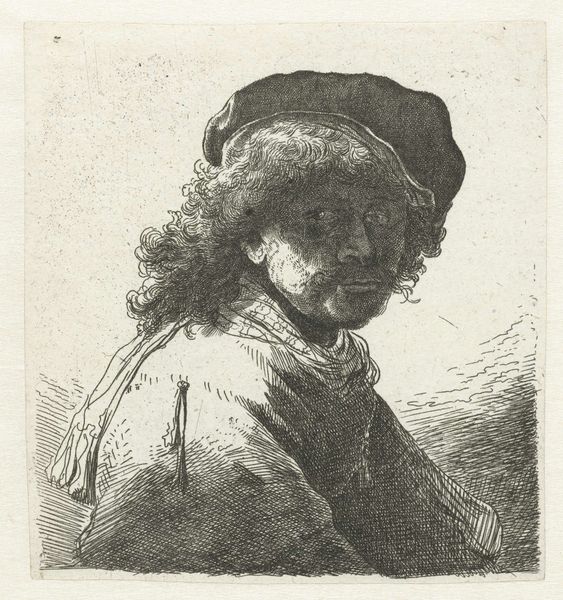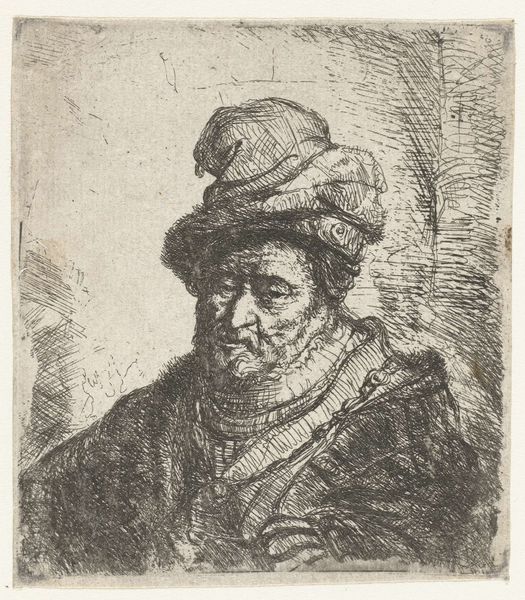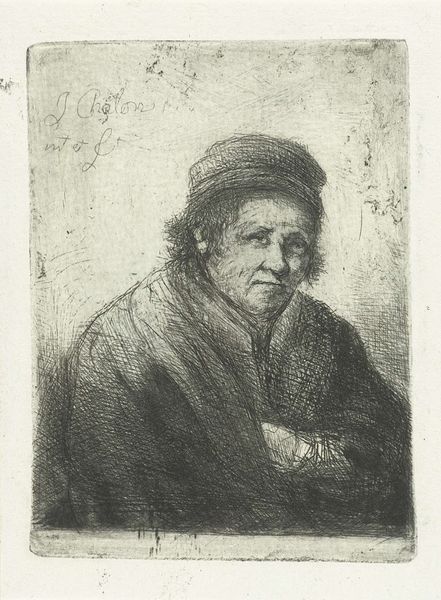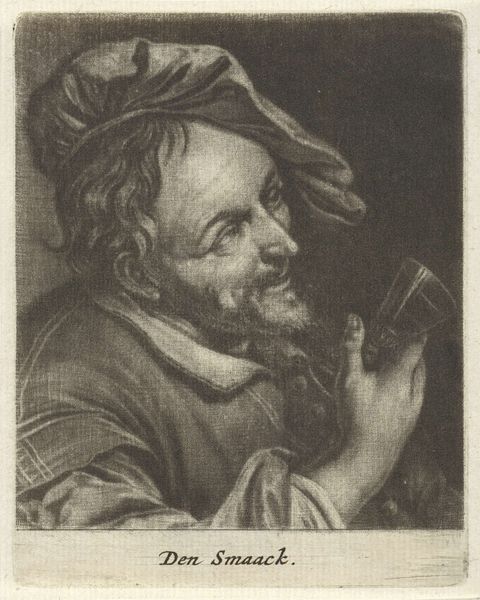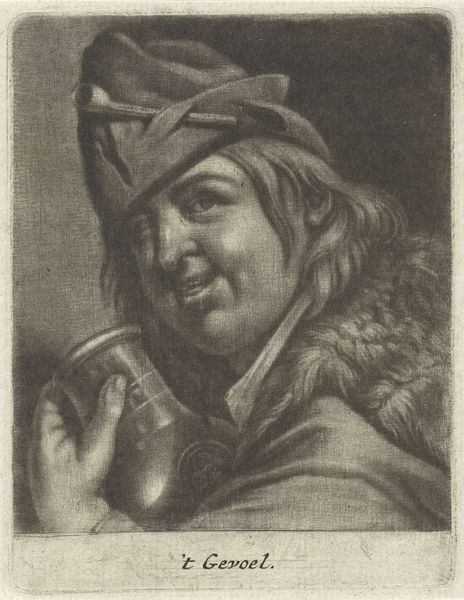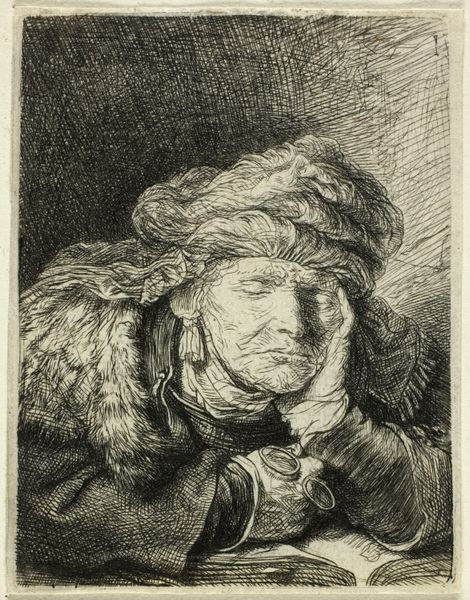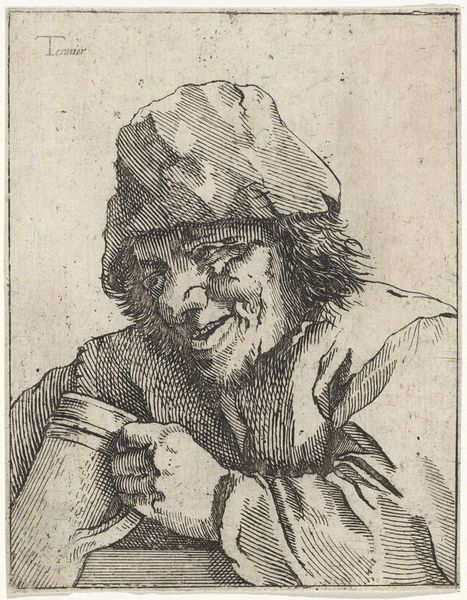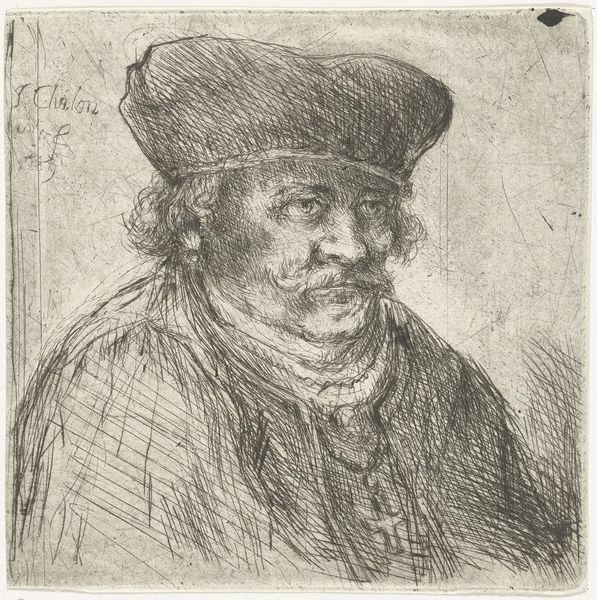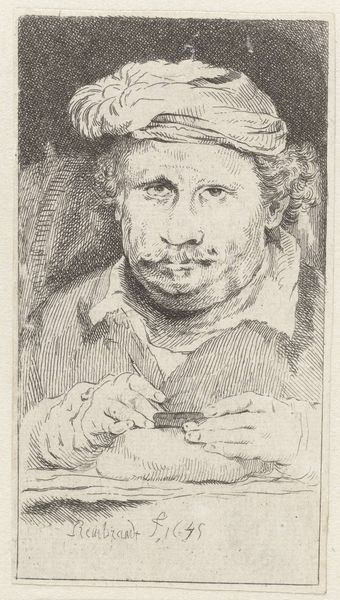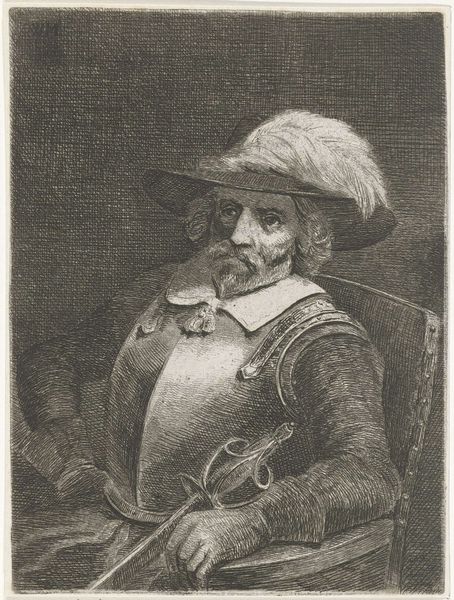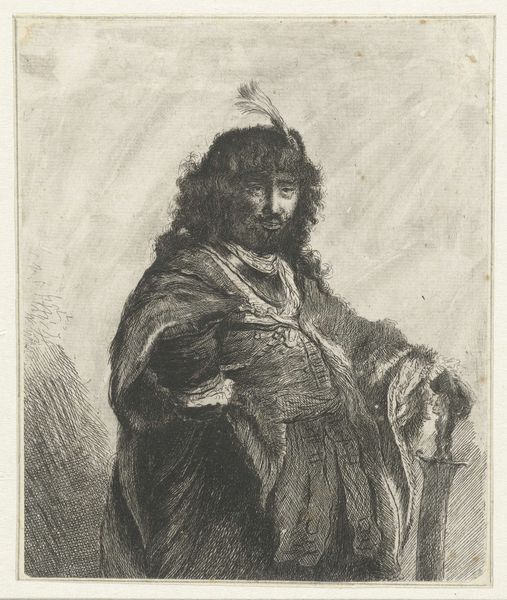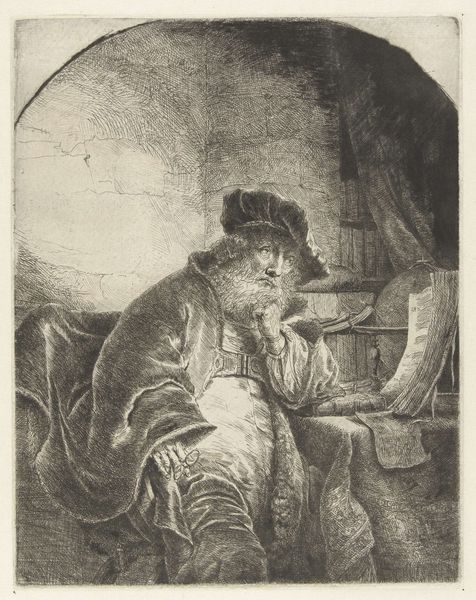
#
charcoal drawing
#
portrait reference
#
portrait head and shoulder
#
animal portrait
#
animal drawing portrait
#
portrait drawing
#
facial portrait
#
portrait art
#
fine art portrait
#
digital portrait
Dimensions: 68 x 56 cm
Copyright: Public domain
Editor: Here we have Rembrandt van Rijn's "Self-portrait" from 1660, housed here at the Staatsgalerie Stuttgart. The texture is incredible, you can really see the brushstrokes. There's a strong feeling of introspection about it. What captures your attention most in this work? Curator: What I find most striking about this portrait, beyond its clear technical skill, is the public role Rembrandt constructed for himself through his constant self-portrayal. These images weren't simply private exercises, but carefully considered statements about the artist's identity and status within 17th-century Dutch society. How do you perceive that identity being presented here? Editor: I suppose it's interesting to consider how an artist controls their own image, especially when the market sort of demands that. There’s the fur mantle and the cap, maybe hinting at wealth, but then this deeply lined face seems so vulnerable, so human. Curator: Precisely! Rembrandt was very deliberate in deploying different tropes, challenging societal expectations of the artist. Do you think his constant depictions of himself democratized portraiture or rather solidified the artist as a cultural hero? Editor: It's probably a bit of both. Making your own face a worthy subject does break down some barriers, but focusing on himself does kind of celebrate the individual artist. Thanks, I will definitely view Rembrandt's self-portraits in a new light now. Curator: It’s through understanding the intersection of personal expression and prevailing socio-political structures that the true value of a work is revealed, don’t you think?
Comments
No comments
Be the first to comment and join the conversation on the ultimate creative platform.
